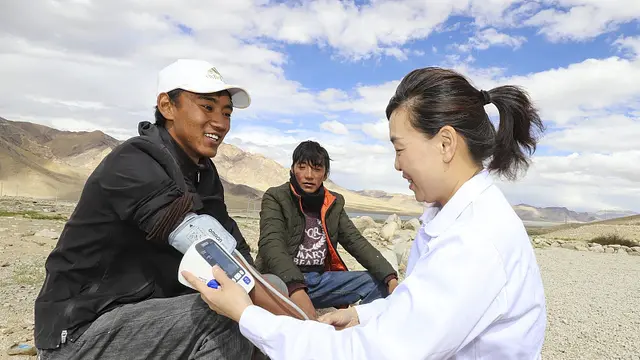China has been dispatching medical professionals from the top hospitals across the country to medical institutions in Tibet and Xinjiang every year over the past decade, which has significantly improved the medical services in the two regions, the National Health Commission (NHC) said at a press conference on Friday.
The country has sent more than 2,500 high-level medical talents to hospitals in the Tibet Autonomous Region and Xinjiang Uygur Autonomous Region, helped train over 1,000 medical teams, 5,800 medical staff and cultivated over 10,000 health workers at different levels in the two regions, said Li Dachuan, deputy director of the Bureau of Medical Administration of the NHC.
Medical assistance has been provided to eight major hospitals in Tibet and eight in Xinjiang respectively, Li said, adding that another 13 county-level public hospitals in Tibet were included in the program last year.
The NHC briefs the media on China's medical assistance program to Tibet and Xinjiang at a press conference in Beijing, August 26, 2022. /China.com
Thanks to the program, the medical services in the two regions have been improved continuously, and local people have enjoyed higher level of health care services, said Hu Qiangqiang, spokesperson for the NHC.
In 2020, the average life expectancy of the residents in Tibet reached 72.19 years, Li said, compared with 68.17 years in 2013. In the same year, the average life expectancy in Xinjiang reached 74.42, according to local health authorities.
In the past three years, the maternal mortality ratio in Tibet has declined by 19.5 percent, and the infant mortality rate has dropped by 35.3 percent, Li said.
By the end of 2021, the cure rate of critically-ill patients in the hospitals that have received the assistance in Tibet reached 89 percent, he noted.
In Xinjiang, a batch of key disciplines have been established or upgraded in the eight hospitals that have received the medical assistance, which can treat 332 critical illnesses and 1914 common diseases, according to Li.
(CGTN)
 简体中文
简体中文

